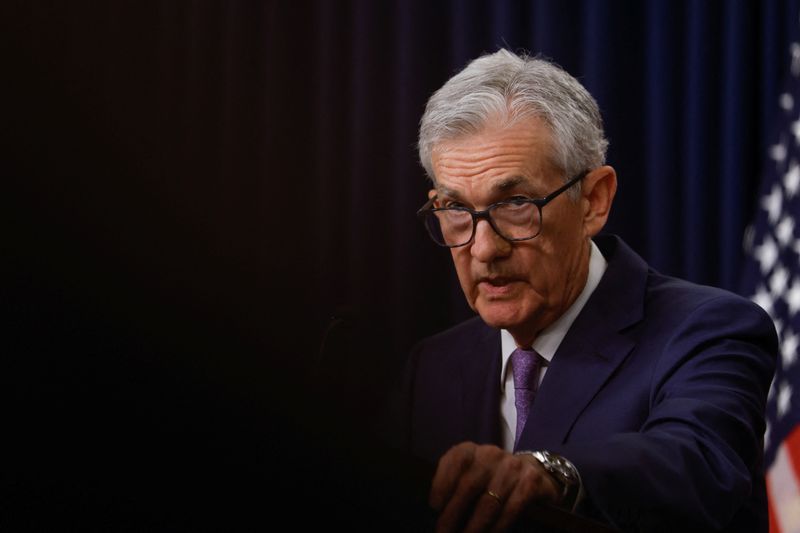
By Balazs Koranyi and Howard Schneider
SINTRA, Portugal (Reuters) -The U.S. central bank still needs more data before cutting interest rates to ensure that recent weaker inflation readings give a true picture of what is happening to underlying price pressures, Federal Reserve Chair Jerome Powell said on Tuesday.
Data for May showed the Fed’s preferred measure of inflation did not increase at all that month, while the 12-month rate of price increases has ebbed to 2.6%, still above the central bank’s 2% target but on the way down.
“We just want to understand that the levels that we’re seeing are a true reading on what is actually happening with underlying inflation,” Powell said at a monetary policy conference in Portugal sponsored by the European Central Bank. “We want to be more confident, and frankly because the U.S. economy is strong … we have the ability to take our time.”
Still, Powell acknowledged the central bank has entered a sensitive phase in its policy deliberations where the risks to both the Fed’s inflation and employment goals “have come back much closer to balance.”
In particular, some closely watched measures of the job market suggest the U.S. economy may be approaching a point where further progress on inflation will involve the sort of tradeoffs with rising unemployment that the Fed has so far avoided.
“You can’t know that with precision,” Powell said, “but it is understood that we have two-sided risks.”
“Given the strength we see in the economy we can approach the question carefully,” Powell said, while also noting that policymakers don’t want to keep policy too tight for too long and “lose the expansion.”
RATE-CUT TIMETABLE
The Fed has kept its benchmark policy interest rate steady in the 5.25%-5.5% range since last July, but officials are debating when to ease monetary policy as inflation edges back to the central bank’s 2% target.
Inflation is still more than half a percentage point above that target, according to the Fed’s preferred personal consumption expenditures price index, and was described as “elevated” in the central bank’s June 12 policy statement.
The most recent data on inflation and overall economic activity, however, suggest that price pressures may be easing further, and investors anticipate an initial quarter-percentage-point rate reduction at the Fed’s September 17-18 meeting.
Whether the Fed ends up on that timetable or a more delayed one will hinge on coming employment and inflation reports, including the release on Friday of the monthly employment report for June and the July 11 release of the consumer price index for June.
While the timing of an initial rate cut may matter little to the larger economic outcomes the Fed is seeking, policymakers are attuned to the risk of keeping tight monetary policy in place too long – and putting the current low unemployment rate at risk if the economy slows too much or too fast – and are also sensitive to the signal they will send by cutting rates.
They want to be sure in particular that the first reduction in borrowing costs becomes the start of a full monetary easing cycle that brings rates steadily down to a level where the Fed feels it is neither encouraging nor discouraging businesses and households to invest and spend.
For many officials that has been an argument in favor of being patient and waiting longer to make the first rate cut.
(Reporting by Balazs Koranyi; additional reporting by Howard Schneider; editing by Paul Simao)
EMEA Tribune is not involved in this news article, it is taken from our partners and or from the News Agencies. Copyright and Credit go to the News Agencies, email news@emeatribune.com Follow our WhatsApp verified Channel





